
Avenge the Lusitania: How Cunard's loss spurred America into action
There are points in history that change everything. What happened to RMS Lusitania in May of 1915 did exactly that…
In May 1915, almost one year into the horror of The Great War, a catastrophic event unfolded that lasted no more than 18 minutes, and yet had the power to significantly alter the course of the entire conflict – changing the nature of geopolitical culture forever. It's an impact that remains significant between countries in our modern world.
Yet, to understand the severity of what occurred off the coast of Ireland on May 7, 1915, we have to step back further in time. As the 20th century matured through infancy, and ocean-going travel increasingly defined each nation's diplomatic prowess, RMS Lusitania and her sister ship – RMS Mauretania – proudly commanded the Transatlantic pride of Great Britain.
Weighing in at a hefty 30,000 tonnes each and yet capable of traversing the North Atlantic in less than five days (an incredible feat for the era), both ships drew respective crowds wherever they docked. Affectionately referred to as the ‘Greyhounds of the Sea’, Cunard ruled the waves in a fashion that rivals could only dream of.
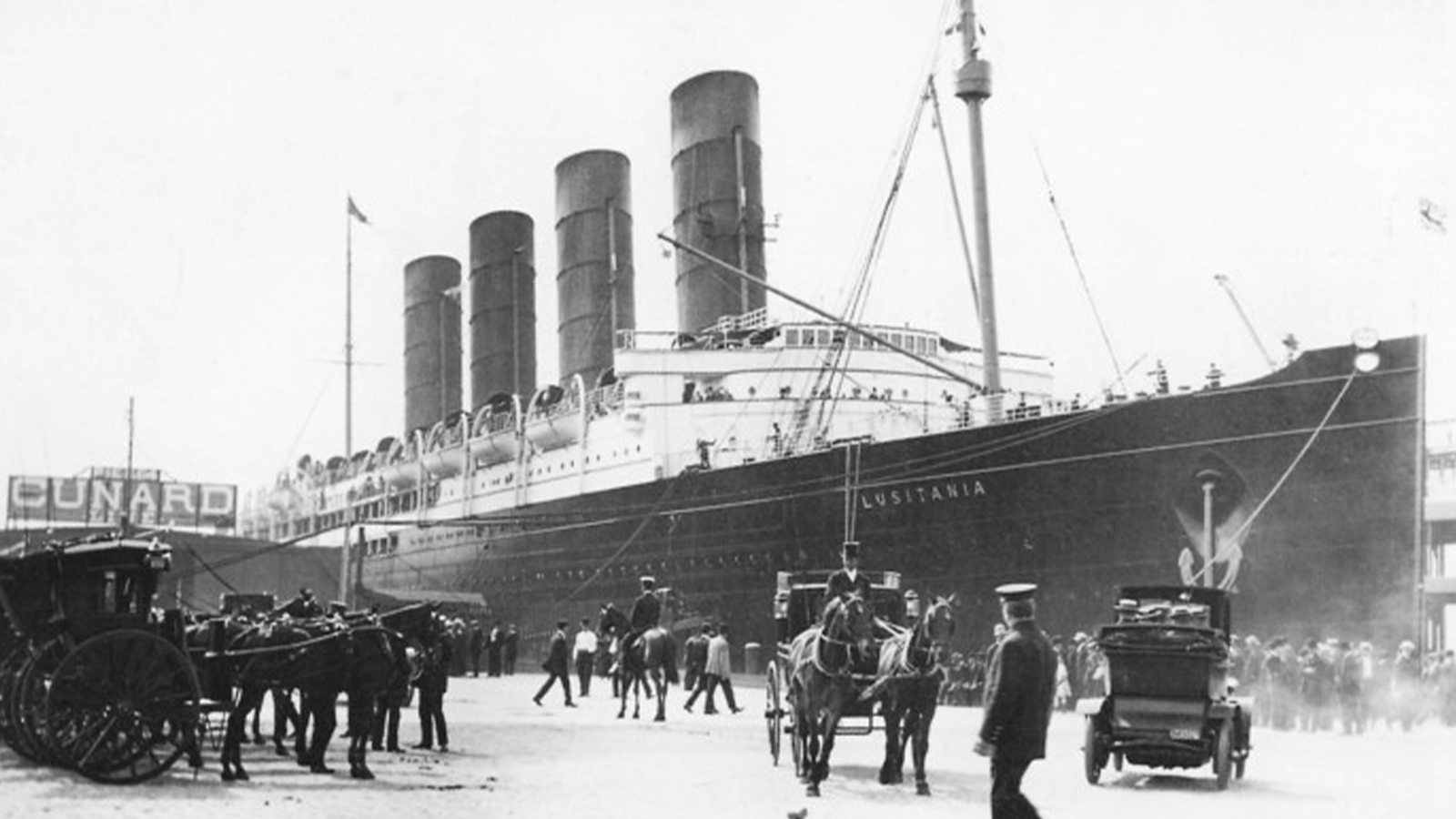
Until RMS Olympic (later partaking in the war effort) and RMS Titanic came along, RMS Lusitania was one of the world’s largest ocean liners. She looked as though she meant business and for good reason – the British Admiralty had subsidised her construction, stipulating to Cunard that Lusitania could be called for military service should war break out.
There was good reason for such a plan. With deep rumblings from within Europe, and the tense political outlay of Russia's blood-soaked revolutionary tinderbox, future conflict was practically inevitable. Having access to strong vessels that could moonlight as troop carriers would be imperative for success.
In 1914, with Lusitania settled into providing steady passenger service, the dreaded conflict began. The Great War, later to be coined World War One, would soon engulf the continent. Yet, much to Cunard’s surprise, even though Lusitania’s design already allowed for prompt conversion into a warship, the request did not come.
Instead, Lusitania was oddly permitted to continue transporting passengers, mail and freight as before. Some felt as though the Cunard liner may have boasted diplomatic immunity but, as The Great War would demonstrate, civilians were no longer immune to warfare.

RMS Lusitania: Far from diplomatic immunity
Tensions increased around each Transatlantic sailing. While voyaging through the waters during times of war may seem remarkably foolish now, back in Lusitania’s day, there was an understanding that warfare held a long-standing respect for civility; lines that were not to be crossed.
Harming innocent civilians was not acceptable. Opposing forces were permitted to target each enemy on combat grounds only – or, in other words, personnel of a military persuasion in designated conflict areas. This was accepted as international law and written into the convention of all civilised nations. If you breached this agreement, there would be serious and far-reaching consequences.
Lusitania may have carried the potential to be a warship but, according to official sources, she continued to go about her business as a mere merchant vessel. She was not deemed a man-of-war and therefore, under the law of nations, she could not be sunk without warning.
However, a potent mix of circumstances and increasing desperation were straining these aged agreements. In times of war, everything can change upon the bellow of a command.
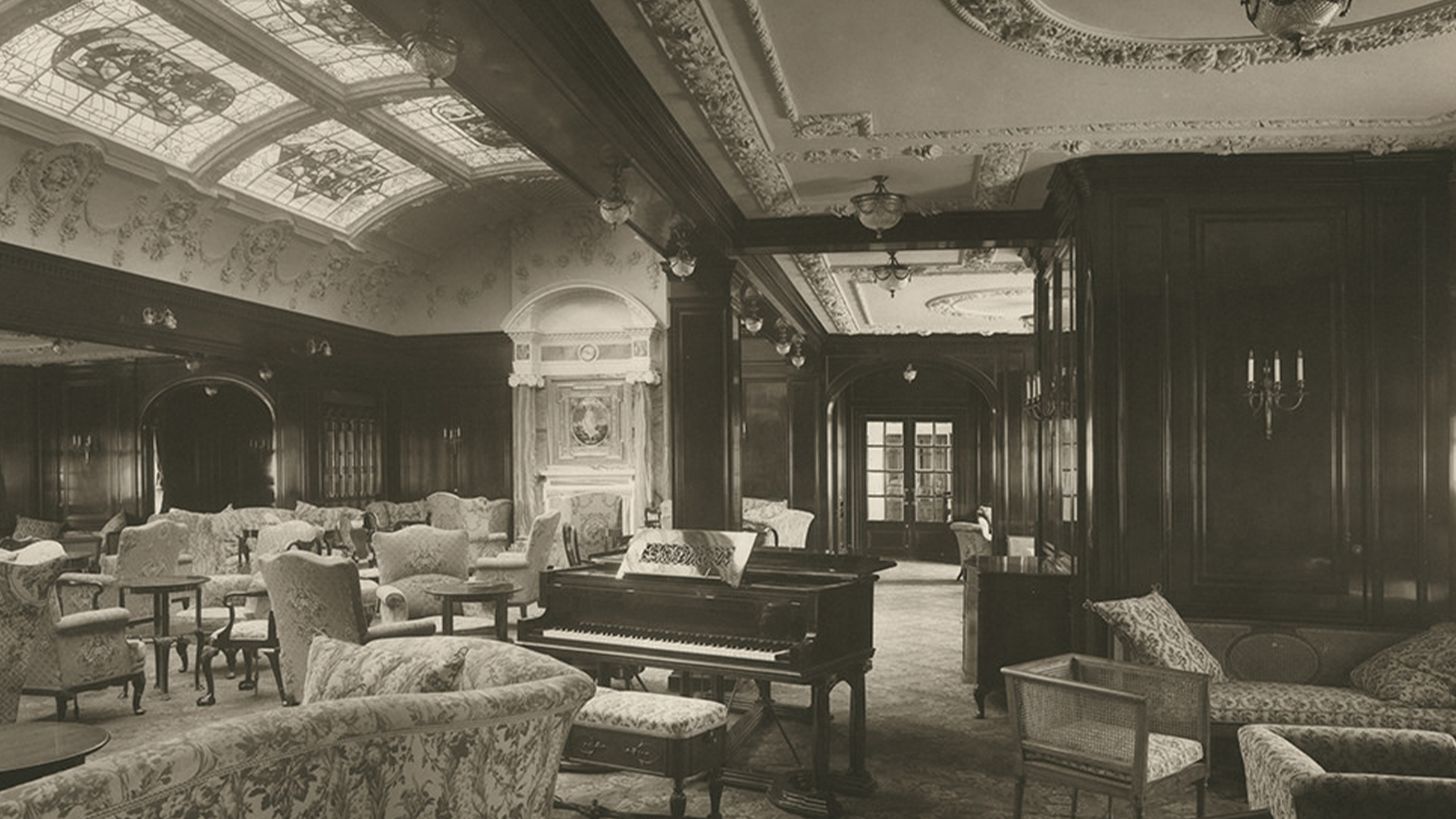
Within the waters that Lusitania was sailing, England had formed a naval blockade that prevented merchant ships from delivering much-needed food and war supplies. The strategy was intended to strangle Germany into submission.
As retaliation, in February 1915, Germany declared the waters surrounding Great Britain a war zone as well as their clear intention to sink merchant ships, without the usual warning, in-order to pose the same difficulty to the UK.
A few weeks later, the worded warnings turned into hard action. On March 28, 1915, the Germans torpedoed the British passenger-cargo ship SS Falaba, not far from Pembrokeshire in Wales.
The warning was supposedly given to the intended target, albeit only minimally. As passengers and crew upon the SS Falaba rushed to lifeboats, a torpedo hurtled towards them.
Falaba quickly foundered, with 104 onboard perishing. She was the first unarmed passenger ship to be attacked in war and a worrying new precedent had been set.

An official German warning
Thousands of miles away, in the United States, the event was noted, for the downfall of SS Falaba had claimed the first American casualty of World War I. The US passenger was Leon Thrasher, a 31-year old mining engineer from Massachusetts. America was a neutral party, but they were keenly observing what was going on.
The loss of SS Falaba was a concern to all shipping lines with active merchant ships but, at Cunard, there remained buoyant confidence that RMS Lusitania - with her world-renowned speed – would outrun any possible assailant.
Lusitania also happened to be in good hands, those of a British Royal Naval Reserve Commander - Captain William Turner – who, during the 1913 Mersey Review, had proudly conducted the British King and Queen on a tour of RMS Mauretania.
Over in New York, on the morning of May 1, 1915, a new and unexpected form of warning heralded from Germany. This appeared as an advertisement within numerous New York newspapers, strategically located alongside Cunard’s sailing notices.
The fierce words had been placed there by the Imperial German Embassy in Washington and stated:"Travellers intending to embark on the Atlantic voyage are reminded that a state of war exists between Germany and her allies and Great Britain and her allies; that the zone of war includes the waters adjacent to the British Isles; that, in accordance with formal notice given by the Imperial German Government, vessels flying the flag of Great Britain, or any of her allies, are liable to destruction in those waters and that travellers sailing in the war zones on ships of Great Britain or her allies do so at their own risk."
Many passengers and crew of the Lusitania saw the notice but most quickly refolded their broadsheets, muttering about what nonsense Germany was sprouting. Captain Turner said: “It’s the best joke I’ve heard in many days!”
His words would return to haunt him.

Before the downfall: Scepticism and ignorance
The belief that Lusitania would likely leave the Germans in her wake was strong while, despite recent developments, the old-fashioned notion that warning would be given to merchant ships – and passengers would be allowed to get into lifeboats – held stubbornly fast.
Sceptics noted there was no specific mention of Lusitania in the printed warning and, therefore, the Germans could have been referring to anyone. As vague as it was threatening, the warning from Germany's Imperial Embassy was largely ignored.
Lusitania looked as strong as ever, the ocean was a large place and most agreed that Germany would have hell to pay were they to target innocent women and children. Consequently, most passengers opted not to cancel, and Lusitania left New York Pier 54 with her largest eastbound passenger list of the year.
Ahead of them, on May 6, and the other side of the Atlantic, German submarine SM U-20 attempted to torpedo a White Star passenger liner. It missed for the White Star vessel had sped out of harm’s way too quickly. SM U-20 opted to lay low, it was only a matter of patience and time.

RMS Lusitania: Disaster strikes
The next day, not far from the coast of Ireland, RMS Lusitania slowed in the morning fog. She had steamed across the Atlantic in good time and was aiming for Liverpool – where she intended to drop off her 1,962 passengers.
Among them were millionaire heir Alfred Vanderblit, art collector Hugh Lane, actress Rita Jolivet, Broadway theatre producer Charles Frohman, a former British Member of Parliament and a special envoy to the King and Queen of Belgium.
Unexpectedly, a message in high-grade naval code, was received from Vice Admiral Coke. It ordered Lusitania to divert into Queenstown immediately.
This was standard Admiralty practice when grave danger was present. Lusitania aimed straight for the Irish Coast, with plans for Liverpool forgotten. Land began to come into sight while nerves upon the bridge were peaked.
Suddenly a white streak hurtled towards them and Lusitania was struck with a sound that Captain Turner would later describe as "like a heavy door being slammed shut." Immediately behind came a much larger second explosion that shook the whole ship, while water and debris careened upward.
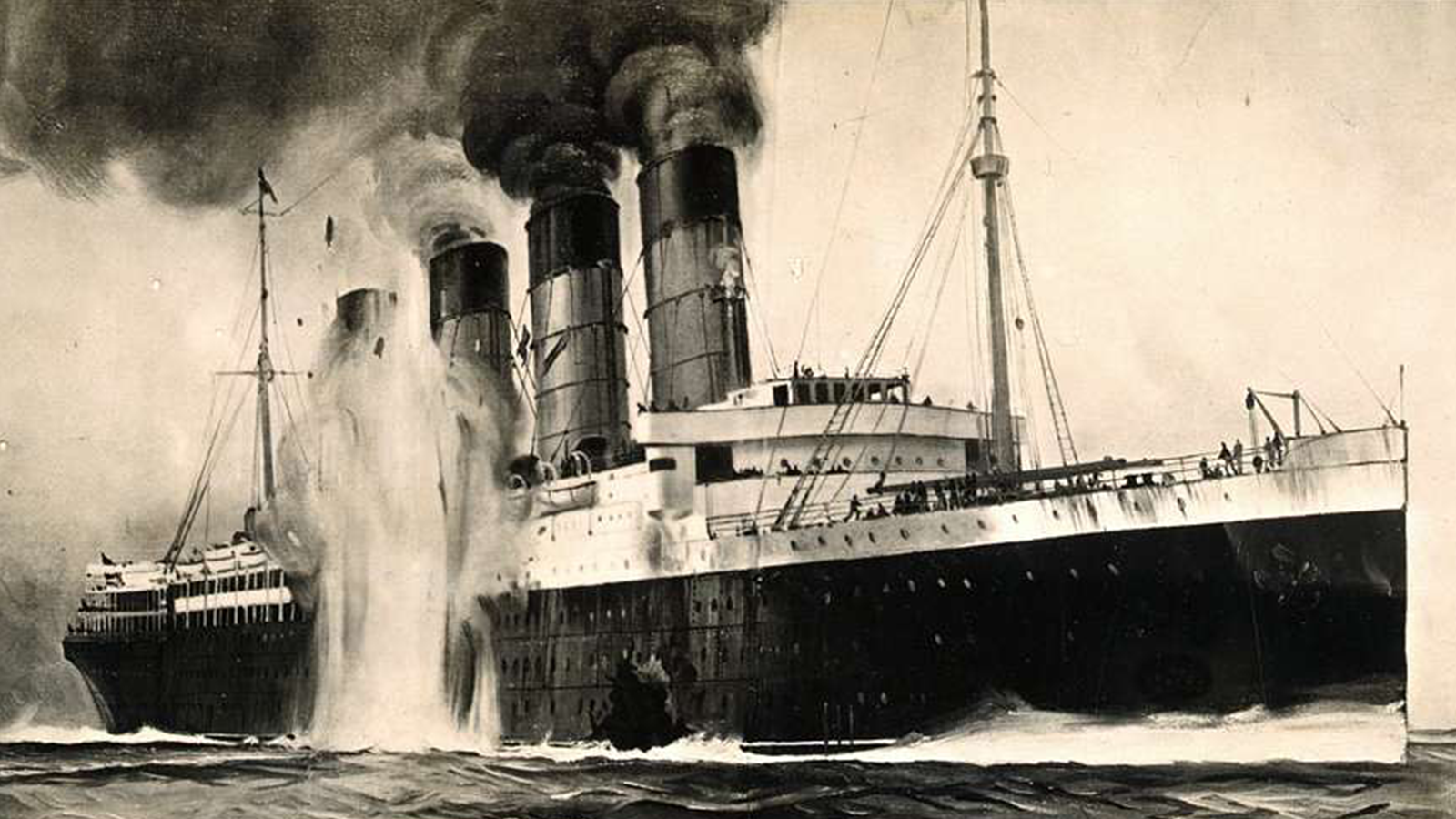
No-one knew if the second hit was another torpedo or otherwise, but there wasn’t time to consider the matter. Bridge signals warned of fire and extensive flooding within the front section aft of boiler room No.1, while nearby, the commutator was already registering a list of five degrees starboard.
Lusitania was 14 miles from shore and, although her engines were still set for ‘full astern’, Captain Turner knew she wouldn’t make it. Within minutes, the bridge slanted steeply. It was unusual for a ship of Lusitania’s size to be in such distress so soon. The order to abandon ship came quickly.
Passengers and most of the crew headed for the boat deck only to be greeted with a most unwelcome problem. Thanks to Lusitania’s dramatic list, all of the port-side lifeboats had swung inward. It would now be incredibly difficult to launch them. However, they had to try.
Each lifeboat had a snubbing chain attached to it. This held the boats to deck as they were being swung out. The chain’s purpose was to steady the boat while it took on occupants. This now seemed like luxury amid the chaos, and it was also a serious problem.
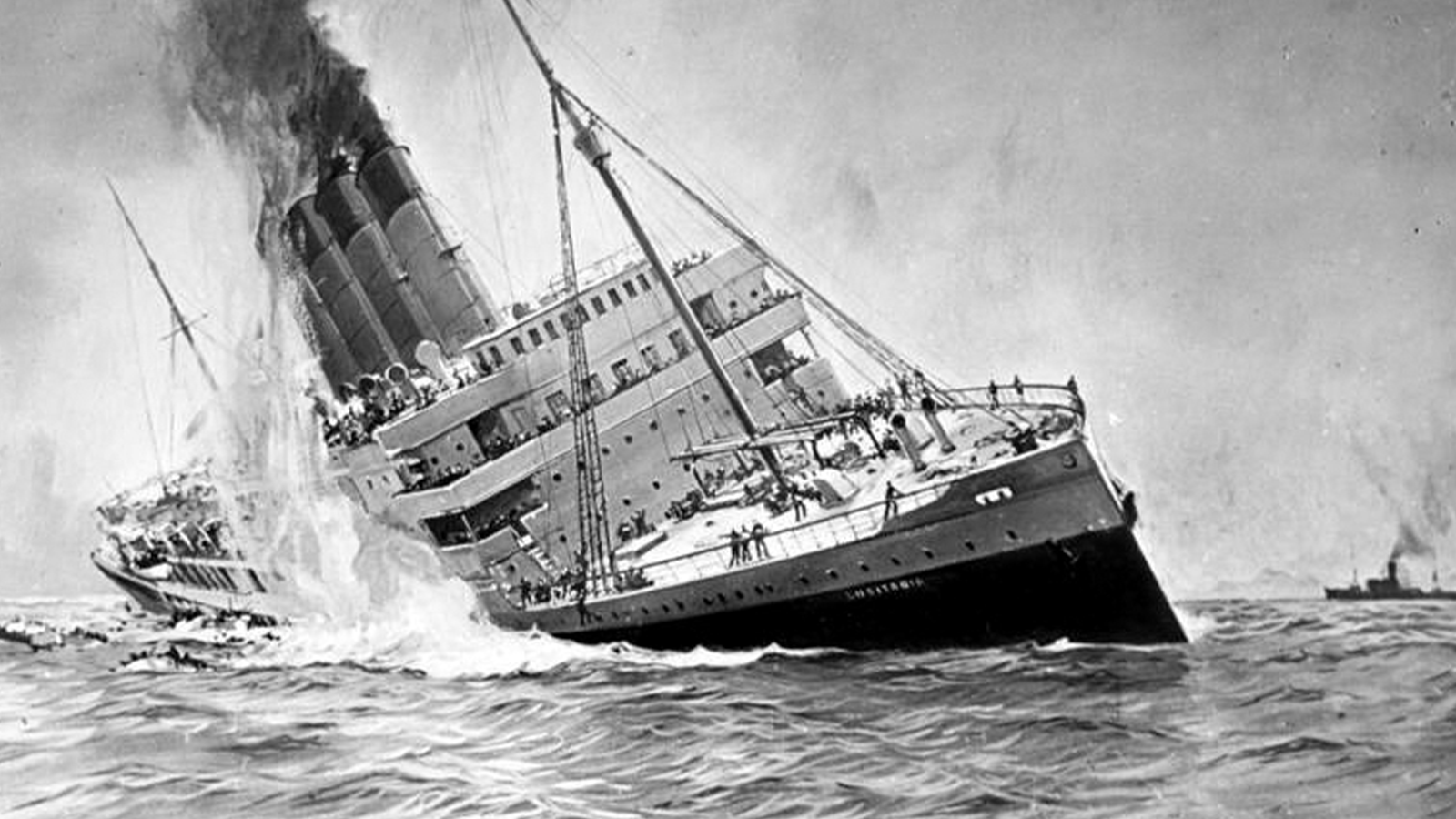
As Lusitania’s list increased to 15 degrees and the first lifeboat’s release-pin was knocked out, all five tons of that first craft thundered inward, crushing those who stood alongside on the boat deck.
The strain passed to the next lifeboat and a collapsible, causing both to loosen and also go hurtling down the deck, injuring and killing those who rushed down towards the waiting ocean. It was a horrific scene.
The crew shouted for the port-side trim tanks to be flooded. They hoped this would give them the window they needed by temporarily counteracting the alarming list.
However, the ship’s power had gone out and this wasn’t an option. In the background, desperate screams echoed out from passengers who’d become trapped in the first-class elevators when the generators had died. They would not be leaving the ship.

The horrific end of RMS Lusitania
Understandably, some of the passengers could no longer hold it together and they eagerly clambered into lifeboats 6, 8 and 10. All swung inward and down the deck, just as those before had done.
Another passenger, Isaac Lehman, was not to be deterred, for the crew found themselves looking down Lehman’s gun barrel as he demanded lifeboat 18 and almost 60 passengers within was released. The release-pin was hammered out, only for the same tragic fate to unravel once again, killing many individuals in the process.
On the starboard side, some lifeboats were launched successfully – but many remained either chained to the deck via their snubbing chain or they landed bow or stern first, spilling their passengers out into the sea below.
The sheer urgency of the situation meant simple mistakes were having utterly dire consequences. Another two lifeboats simply dropped straight from Lusitania, smashing to pieces as they met the sea.
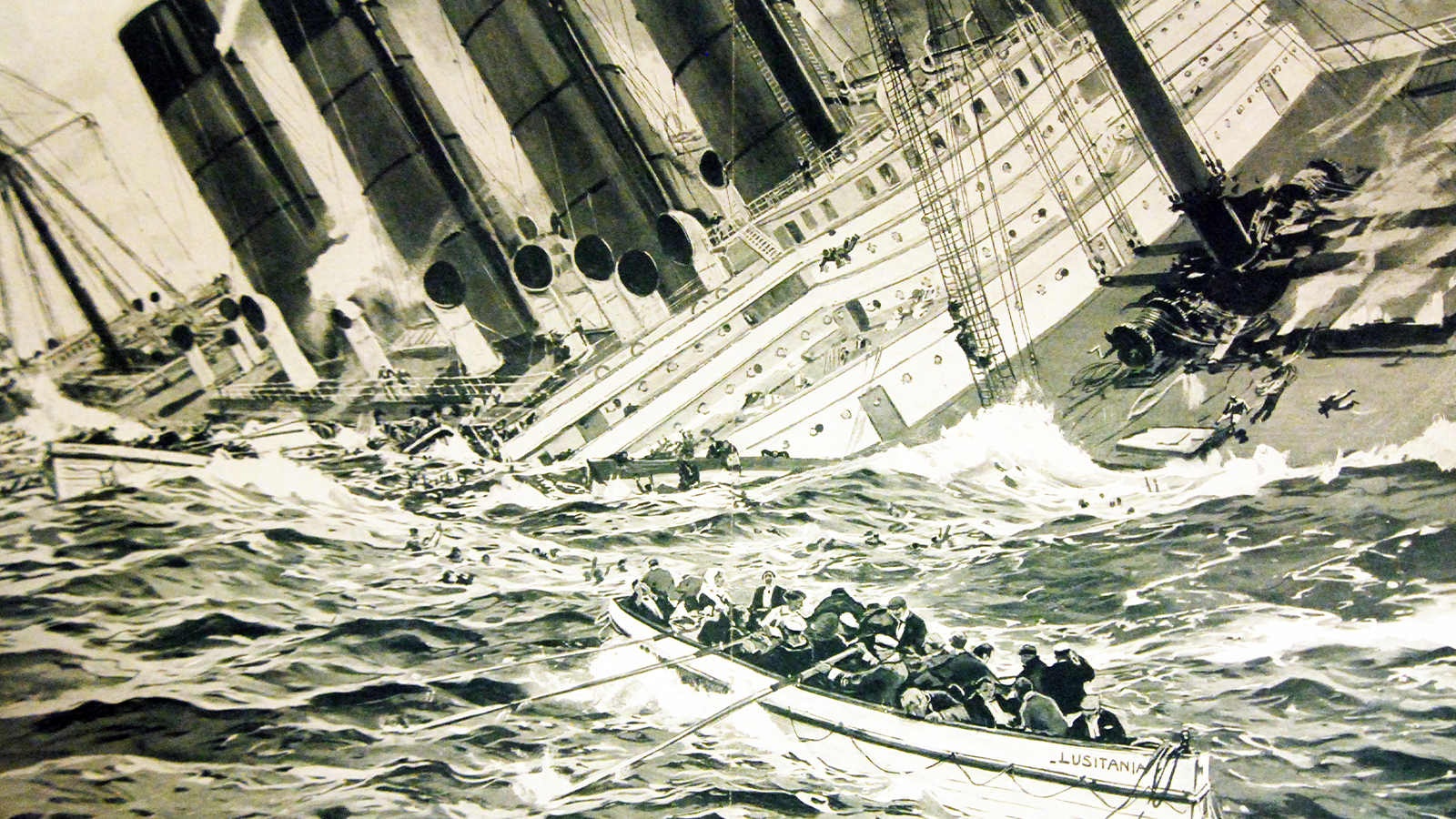
On the bridge, water bubbled across the floor. Lusitania would soon go under. Captain Turner grabbed a chart he’d been working on before the torpedo and then a surge of water rushed through, sweeping him out of the portside door and off the ship.
At 14.28 hours, Lusitania was gone. All had unfolded in less than 18 minutes. There had been barely time to comprehend what was happening, let alone empty a flooding ship that was carrying almost 2,000 passengers. The dead, hundreds of whom were no longer intact, seeped between the pockets of individualised chaos.
Amid the wreckage, of the 48 lifeboats that Lusitania had carried, only six were afloat. Fishing boats and a volunteer lifeboat searched the area. They brought in the dead and the living, while on shore some buildings were nominated as temporary morgues.
Further out, Captain Turner who had clung to a chair for three hours, was eventually brought aboard by a steamer named Bluebell.

Avenge the Lusitania: America joins the war
Of Lusitania’s 1,962 passengers, a total of 1,201 died in the disaster, including women and children. Of almost 400 American passengers onboard, 128 perished and Germany could anticipate serious repercussions.
The world acknowledged a watershed moment in human history; a moment that could not be undone. Never before had civilians been fair game or a direct target during international conflict. That immunity was soon to evaporate completely as future conflict beckoned between nations.
Lusitania was the first transatlantic liner to be sunk within the submarine zone around Great Britain. Nations were shocked. No one could quite comprehend how any side could justify such callous disregard for human life, yet – sadly – it was just the start of things to come.
Tangible anger over Lusitania was quickly on open display. Anti-German riots broke out in London, while America deliberated joining the war. Germany justified its position but few listened.
World governments seized on the mood, utilising the fallen Lusitania as a cover star in propaganda efforts that became known as ‘Avenge the Lusitania’.
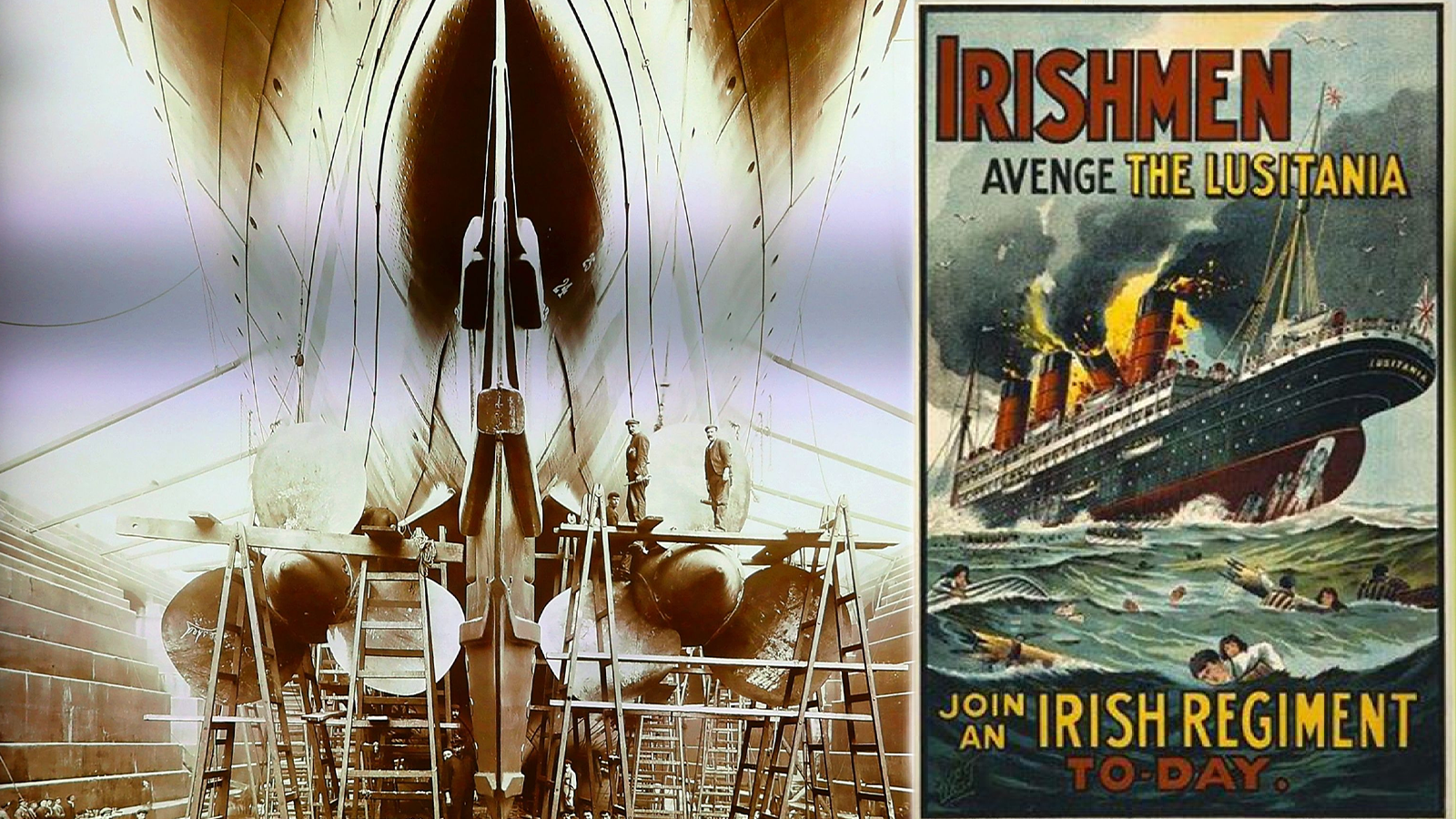
Bold posters in public areas showed dramatic depictions of the sinking with messages such as "Join an Irish regiment today". As furious Brits rushed to enlist, America wasn’t far behind with similar thoughts.
President Woodrow Wilson wished to proceed with caution while former President Theodore Roosevelt demanded swift retaliation. Lusitania had provided the tinder, all that was needed was a final, decisive spark.
This arrived in the form of a telegram between German Foreign Minister Arthur Zimmerman and the German Minster to Mexico; Henrich von Eckhardt.
The correspondence, intercepted by British intelligence, stated that Germany would resort to unrestricted submarine warfare with intention to sink all ships within the war zone, including those carrying American passengers.
It was clear Germany appeared to have learned nothing, nor carried any form of regret from Lusitania. With that, the United States Congress declared war on the Central Powers and entered the war in April 1917. The Great War would rage on for a further 83 weeks.
"That this appalling crime was contrary to international law and the conventions of all civilized nations, and we therefore charge the officers of the said submarine and the Emperor and Government of Germany, under whose orders they acted, with the crime of wilful and wholesale murder before the tribunal of the civilised world. It is your duty to take up the word of justice to avenge this devil’s work. Enlist today."
Two years after her sinking, RMS Lusitania was powerful reasoning for America’s critical move into World War I and, with it, the cards shuffled towards Germany’s eventual defeat. Yet, that part of history is another story.












